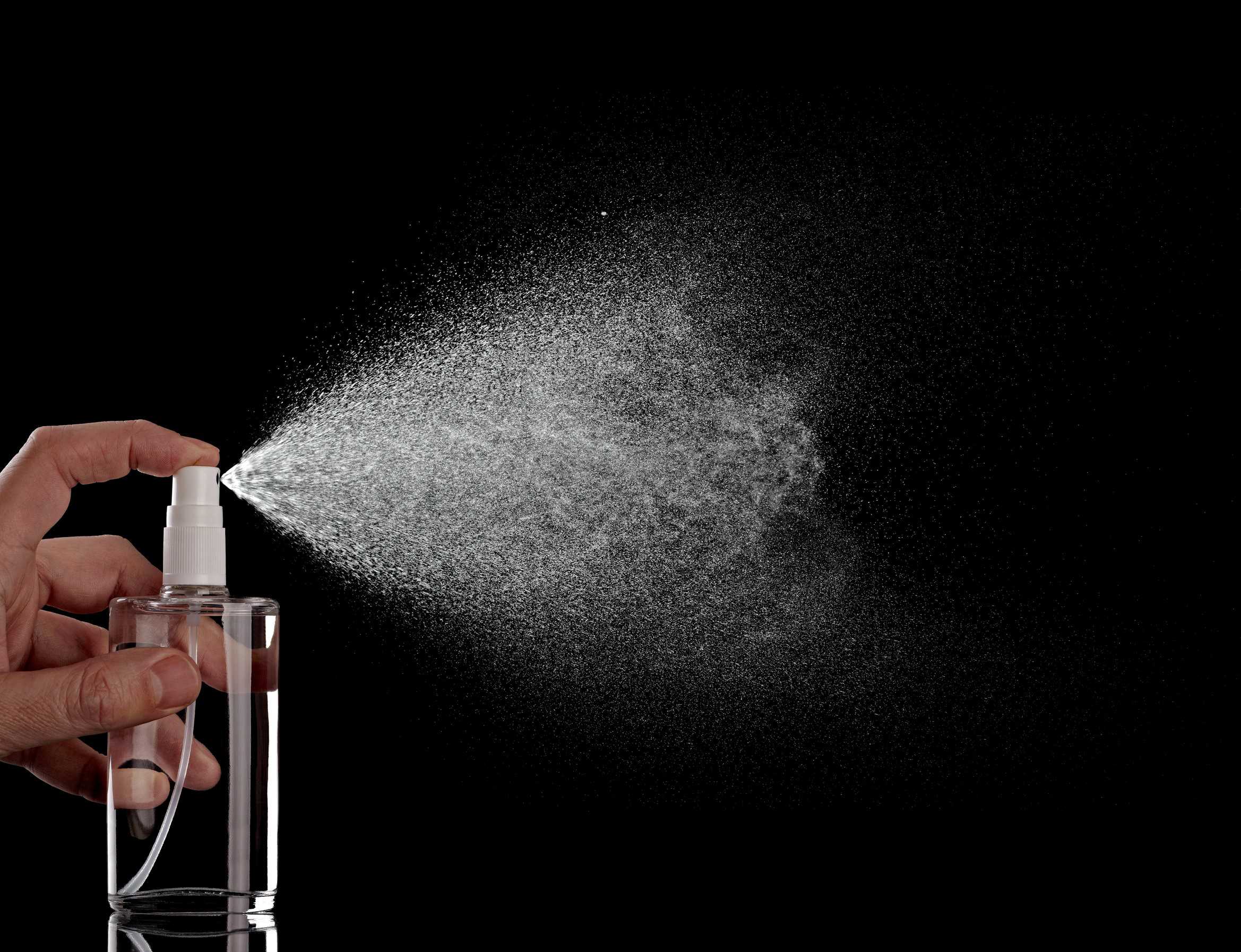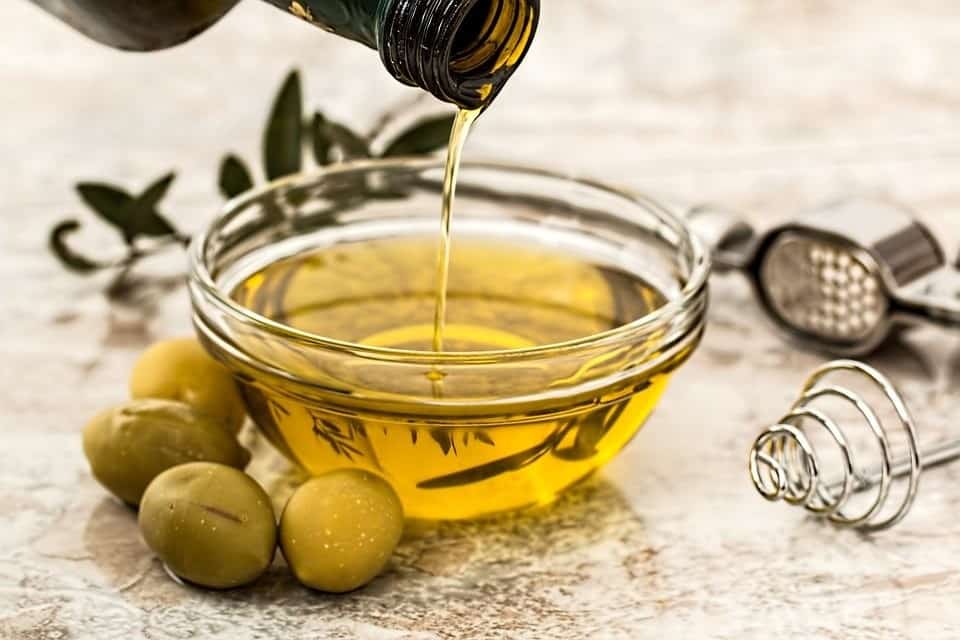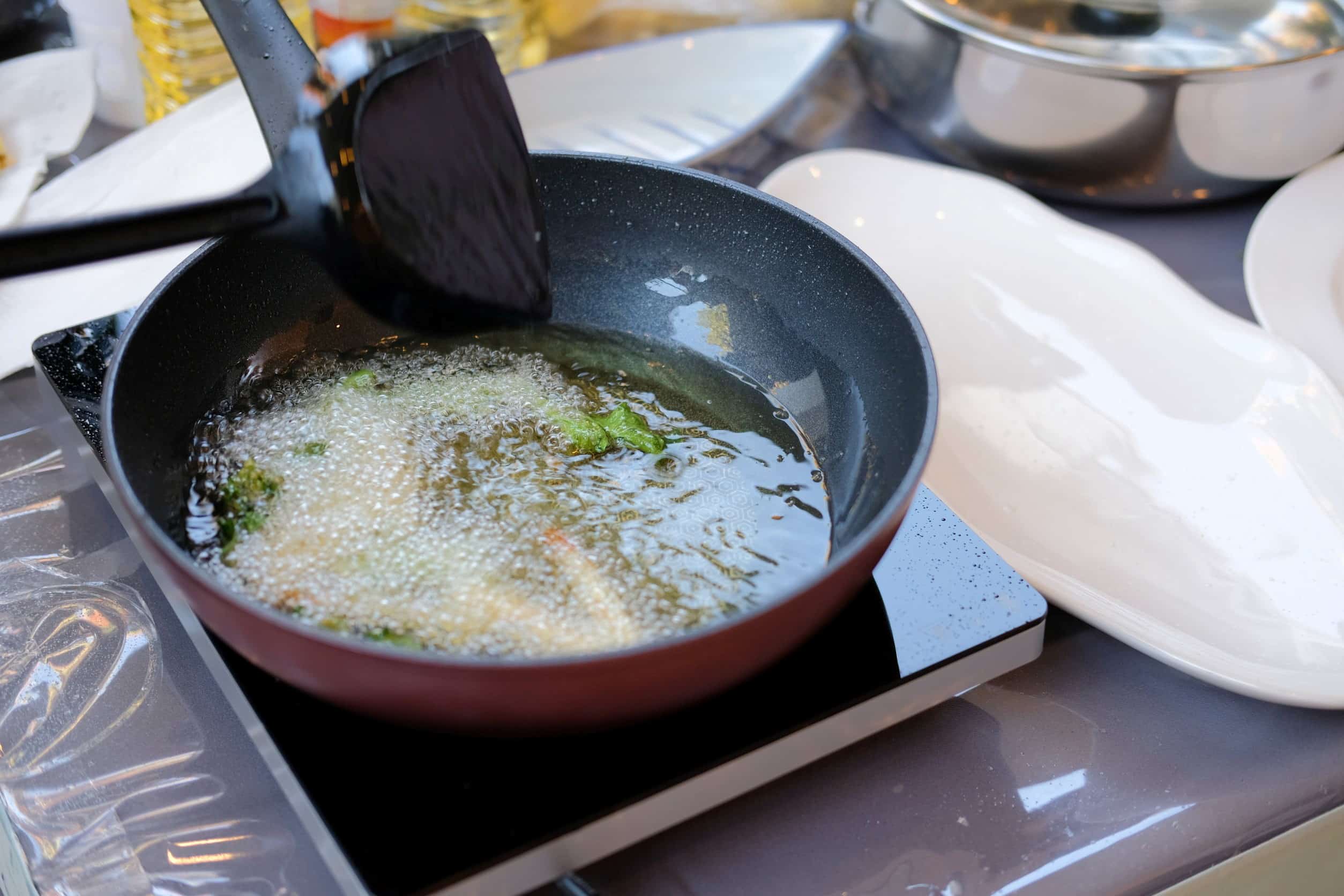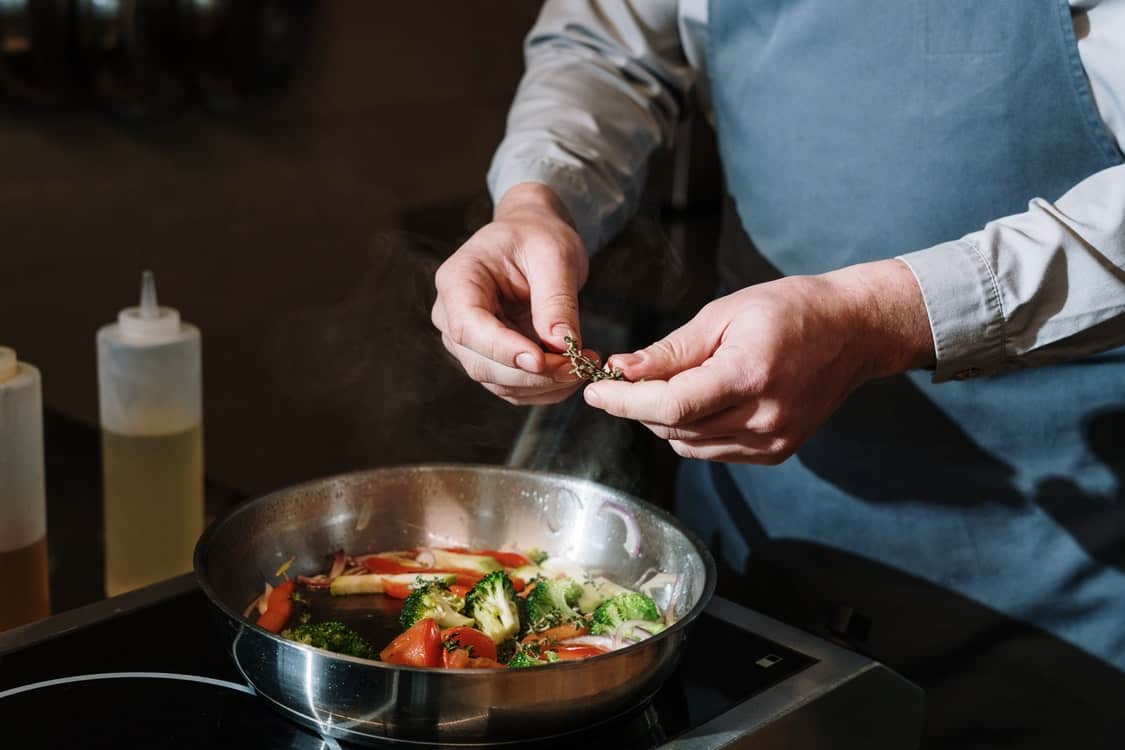Olive oil is quite popular in the kitchen for good reason. It’s tasty, nutritious, and used in a wide range of recipes across the world. You’ll need a good understanding of what you’re working with, limitations and all. Kitchen safety is always the priority, especially with fire hazards.
Is olive oil flammable? Olive oil is combustible, not flammable. Never use a spray bottle to handle cooking oil, as this makes it much easier to ignite. Olive oil is safe under normal conditions due to its high base flash point, but this could change depending on your oil’s purity. Watch for tell-tale warnings that indicate every upcoming phase. Stay calm and be prepared to deal with any grease fires, though they’re unlikely to come up if proper precautions are taken.
Flammable and combustible are terms often used interchangeably for cooking. We’ll go over the main distinctions along with why they’re important to remember below.
Flammables vs. Combustibles
While both flammables and combustibles can burn, the temperature at which they do so differs greatly. This specific temperature is called the flash point, which is the minimum temperature needed for possible ignition. More on that will be covered later.
Flammables are liquids that may ignite at temperatures below 100°F (37.78°C). Combustible liquids ignite at temperatures at or above that. This ties into the phenomena of spontaneous combustion, where certain substances could potentially burst into flames with little to no warning.
It might seem confusing at first. A good rule of thumb to remember is that, ironically, combustibles usually can’t spontaneously combust. Combustibles require certain temperature thresholds non-working conditions are unlikely to provide. Flammables are very volatile and far more likely to self-ignite at room temperature – especially in vapor form.
Liquid vs Vapor

The state of your oil is also important when considering the ignition point. Vapors have more surface area than liquids, which means more oxygen molecules make direct contact. Vapors are more loosely held than other states of matter and get affected by external conditions more easily.
Flammable vapors also tend to be heavier than ambient air, settling in low areas. They’re often constrained to the boundary between the ignitable liquid’s surface and the surrounding air.
It’s for this reason that you should never store cooking oil in spray bottles. It might seem more convenient at a glance, but you’re aerosolizing a flammable substance. This not only makes it easier to burn but also puts it at a much greater risk of making contact with open flames, sparks, or other ignition sources.
Another risk is that the olive oil might leech Polyvinyl Chloride (PVC) from the plastic container it’s stored in. PVC normally has some dangerous additives like lead or cadmium. These carry the risk of liver damage, immune system damage, and even infertility.
Over time olive oil could even dissolve the plastic altogether. This is due to the hydrocarbons in both of their structures. We can see a similar phenomenon between plastic and gasoline.
Olive Oil General Information

Olive oil is combustible, not flammable. It has a flashpoint of 410°F (210°C), which means it’s not too volatile. The flashpoint of a liquid is the temperature at which it emits enough vapor to catch fire in the air. Flammable liquids have a flashpoint of 100 degrees °F. It’s rare for oil to ignite, and you’ll usually only reach this point if left unattended.
If it does catch fire, though, it can burn on a self-sustaining basis. This is due to its hydrocarbon-laden structure. Olive oil found common use as lamp fuel in churches for this very reason.
Olive oil is primarily composed of monosaturated fats, which makes it mostly unsaturated compared to other options. It’s also rich in antioxidants, omega-6, and omega-3 fatty acids. On top of being very healthy, olive oil is a traditional mainstay in Greek, Italian, and Mediterranean cuisines.
Olive Oil Grade/Purity Differences
Olive oil makes use of a distinct grading system with four categories. Ripe olives are first ground into a paste, then pressed with industrial machines to extract their oil. This process comes in phases. The different grades of olive oil are defined by when and how they were taken.
Extra Virgin
Extra virgin olive oil comes from the first press and contains under 0.8% acidity. Extra virgin olive oil is never treated with heat or chemicals. It’s why they’re usually labeled as “cold press”. It’s the highest grade of olive oil in the market, with companies charging premium rates for it. Unfortunately taste, aroma, and even color can vary greatly between manufacturers.
In practical terms, extra virgin olive oil also has the lowest flashpoint among these grades. It can go as low as 325°F (162.78°C). It’s still not enough to classify it as flammable, but be more cautious when handling extra virgin olive oil near open flames.
Virgin
Virgin olive oil also comes from the first press, but standards aren’t nearly as stringent for it. While heat or chemical treatments still don’t come into play, virgin olive oil is of markedly lower quality than its extra virgin counterpart. Its acidity content falls less than or around 3%.
Its flash point is slightly higher than extra virgin olive oil. It can be difficult to gauge the specific temperature, as this won’t always be consistent among different brands.
Pure
Pure olive oil is just regular olive oil – it’s only “pure” because no additives have been introduced. It’s sometimes referred to as refined olive oil, and that’s mostly a marketing ploy. It’s of a much lower quality than extra virgin or virgin olive oil, with an acidity content resting between 3-4%.
Pure olive oil permits heat and chemical treatments, which allows greater quantities produced at the cost of flavor and aroma. This is the category with the “average” olive oil flashpoint temperature of 410°F (210°C). You’ll usually be working with this in the kitchen.
Light
Light olive oil is named for its color, not its health benefits or calorie content. It’s the lowest grade of olive oil commercially available and is normally diluted with vegetable or canola oil.
There isn’t a reliable way to gauge their flash point temperature because the ratio of olive oil to other cooking oils in the mix will usually be unknown. It’s inconsistent for cooking, and we’d advise against using light olive oil for this very reason.
Points to Watch For

There are a few distinct phases to take note of when handling cooking oil. We’d recommend making use of a kitchen thermometer to better track your oil’s state as it heats up.
Smoke Point
The smoke point is also known as the burning point, which leads to your oil’s composition breaking down. It’s quite low, resting at a modest 374°F (190℃).
While the smoke point of olive oil is far lower than other cooking oils, it boasts distinctly greater advantages. Burnt olive oil doesn’t produce the same level of cancer-causing free radicals other cooking oils do. In fact, extra virgin olive oil was found to be even more stable at these temperatures. The oil even retained its anti-oxidative properties through heat treatment.
Flash Point
The flash point is the temperature at which your cooking liquid begins to give off evaporating vapors. These settle in the boundary between the liquid’s surface and the air. Your olive oil can ignite at this point, but only through external sources. As mentioned earlier, the average flash point of olive oil is 410°F (210°C).
Boiling Point
Reaching the boiling point means you’ve got a serious health hazard on your hands. No recipe requires a scalding temperature of 570°F (298.89℃). This benchmarks when things have gone horribly wrong. The best thing to do is immediately kill the heat and leave it to cool completely.
Trying to move boiling oil is ill-advised, as these temperatures are more than enough to cause painful third-degree burns. Spilling it also risks the liquid or vapor coming into contact with ignition sources – anything from an open flame to even light fixtures could cause a grease fire.
Autoignition Point
The autoignition point corresponds to the temperature range where the oil can burn from its own heat rather than being dependent on outside factors. Your olive oil could ignite at any point at this temperature, even without perceivable prompting. It’s hard to reach this point in a normal kitchen.
Olive oil has a very high autoignition point of 815°F (435℃), which makes spontaneous combustion extremely unlikely to happen. Bear in mind that aerosolized cooking oils have more surface area to interact with oxygen. This lowers thermal requirements, which subsequently lowers the autoignition point. Be careful, as you might be caught off guard by this sudden development.
Point Table (Assuming Pure Olive Oil)
| Points of Interest | Temperature | Effect(s) |
| Smoke Point | 374°F (190℃). | Oil is beginning to burn or break down. |
| Flash Point | 410°F (210°C). | Oil can catch fire, but not on its own. |
| Boiling Point | 570°F (298.89℃). | Oil is at a rolling boil. Turn off immediately. |
| Autoignition Point | 815°F (435℃) | Oil can catch fire even on its own. Very hard to reach. |
Dealing with Olive Oil Fires
Smother It
Fire needs oxygen to burn, so cut off the air supply quickly. Use metal lids to seal off your original cooking vessel. You can achieve similar results with a long cooking tray, damp rag, or even another pot. Be sure to cover it completely for the best results.
Do NOT use water to deal with grease fires. The grease might splash in dangerous, unpredictable ways if you introduce too much water. The same applies to soaked cloth, so if you’re using wet towels make sure they’re only damp when you throw them in.
You can also use salt or baking soda to kill the fire. It’s good in a pinch, but far from our first recommendation. Salt has corrosive properties and can retain heat for a very long time. Using salt will gradually ruin metal cooking implements. Baking soda is a bit better but ruins aluminum if not rinsed out. You’ll also need a whole lot of either for this purpose, so restrict it to small fires.
Be mindful of the different powders in your kitchen. It’s not unheard of for people to mistake flour for baking powder in the heat of the moment. Flour is both dry and combustible and will, quite literally, blow up in your face.
If things get out of hand, a fire extinguisher might be needed. Use class-B extinguishers as they’re specifically designed to handle flammable liquids. Clear the leftover residue as needed using brooms or vacuum cleaners. You can break up the stubborn silicon clumps with a solution of warm water and rubbing alcohol (1:1 ratio).
Kill the Heat
Once the immediate danger is dealt with, turn off your cooktop. It’s important not to move your cooking vessel, as the hot oil can spill outside and harm you. It might even catch on dry fabric or wood in the vicinity, which could, in turn, spread the fire. Let it cool completely.
Cooking thermometers can mitigate the possibility of things ever reaching this point. Try to check in every two minutes to ensure the temperature isn’t climbing too drastically. You can also use a wooden spoon to gauge readiness: a few bubbles floating up means you’re fine, but too many on the surface means you need to let it rest for a short while.
Best Ways to Cook With Olive Oil

Olive oil is a kitchen mainstay for a reason. It’s delicious, nutritious, and safe to handle. They thrive best with certain cooking methods, which we’ll go over below.
Sauté
While sautéing is the better way to use most cooking oils, it works especially well with olive oil. It’s a great way to introduce healthy fats into your diet. Olive oil makes for a nice supplement – or even replacement – for butter in certain recipes, boasting no cholesterol and a fraction of its saturated fat.
Sautéed vegetables in olive oil are a great gateway meal towards a healthier lifestyle. The brief cooking process also lowers the risk of oil reaching dangerous temperatures.
Oven Baking
Some guides don’t recommend using olive oil in baking, but that’s due to the belief that olive oil releases a lot of free radicals in certain conditions. This has been overturned with recent studies in 2018, proving that olive oil remains healthy even in high heat. Its taste might suffer a bit, but olive oil doesn’t pose the same health risks other cooking oils would in similar conditions.
Most cooking oils aren’t recommended for baking. The reason behind this is general unhealthiness rather than free radical risk, as the latter is only a problem at high baking temperatures. Good fats can still be safely used for this, and a couple of solid examples are olive oil and ghee.
Final Thoughts
Olive oil isn’t a big fire hazard, but always keep the risk in mind. Most kitchen fires are caused by negligence, and grease fires in particular are very dangerous to deal with. Pay attention to warning signs and act quickly if things escalate. Stay safe and stay healthy!
